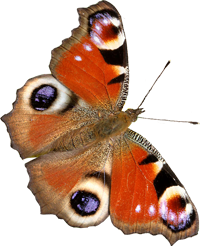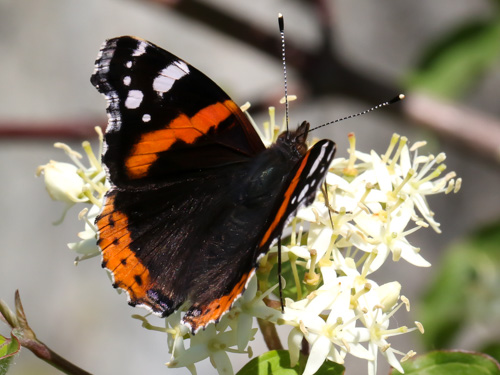
Valais, Switzerland, May 2021
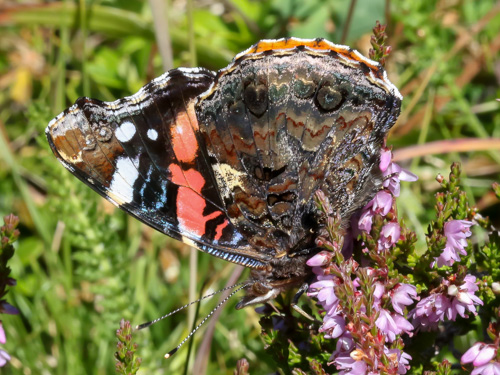
Bern, Switzerland, August 2020
Field notes and information
This is one of Europe's most widespread migrants. It spends the winter in southern Europe, migrating north every year.
Identification & Similar species: The only similar species in the region is the Canary red admiral, V. vulcania. That species is only found in the Canary Islands and Madeira where the current species also flies. It has much richer red-orange upperside markings and a broader forewing orange band with two large characteristic notches.
Distribution & Flight: Hibernated specimens are rather scarce in the north of its range in spring. Arrivals from the south boost northern populations in late spring and throughout summer. The butterfly often becomes common in the autumn when they can be found flying into December on warm days.
Habitat & Behaviour: Found in diverse habitats, linked to its strong migratory behaviour. Takes nectar wherever it can find it, especially from thistles. Frequently found in towns and villages where it feeds on garden flowers. Feeds frequently on sugars from rotting fruit.
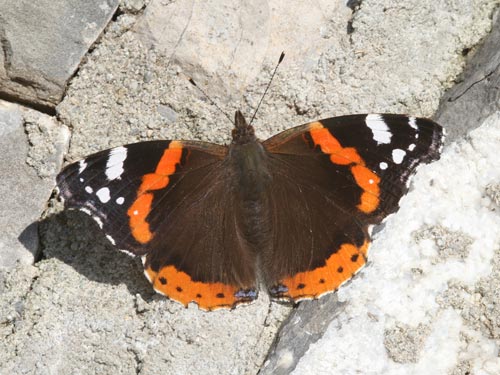
Vaud, Switzerland, January 2007
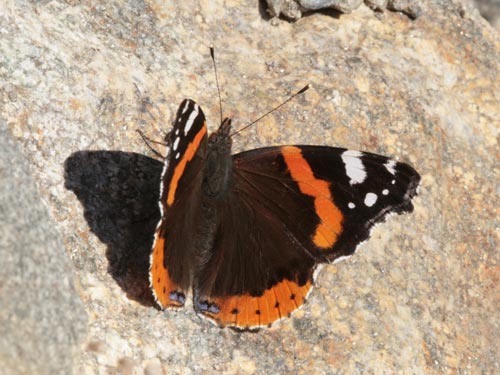
Vaud, Switzerland, January 2007
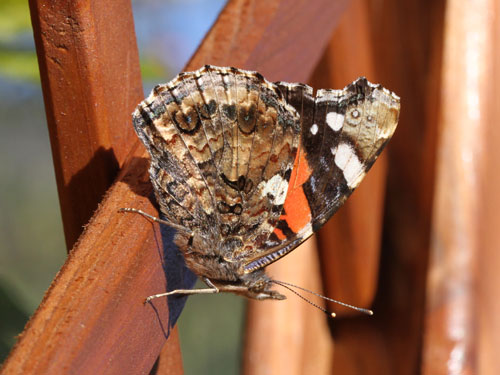
Vaud, Switzerland, October 2014
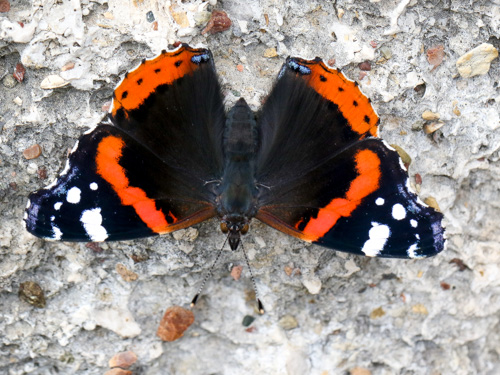
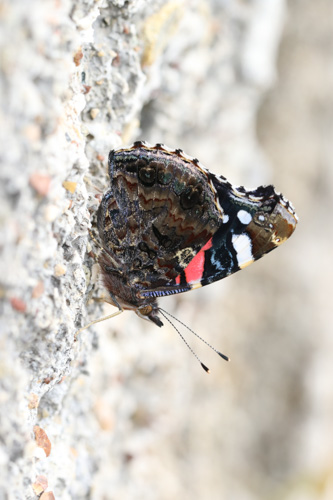
Rhodes, Greece, May 2017
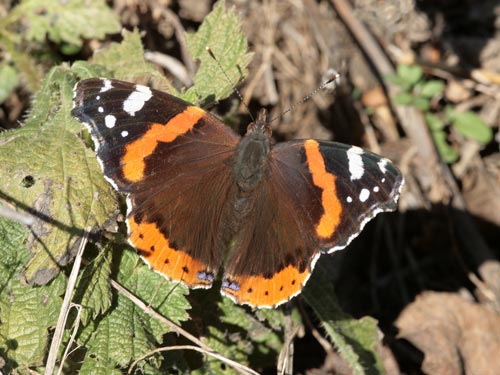
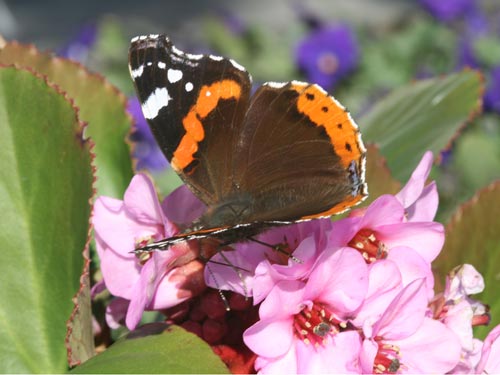
Vaud, Switzerland, January 2007
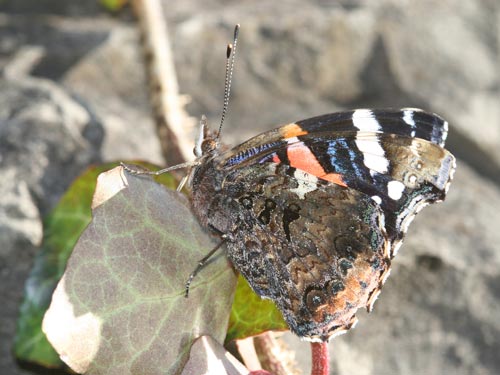
Vaud, Switzerland, January 2007
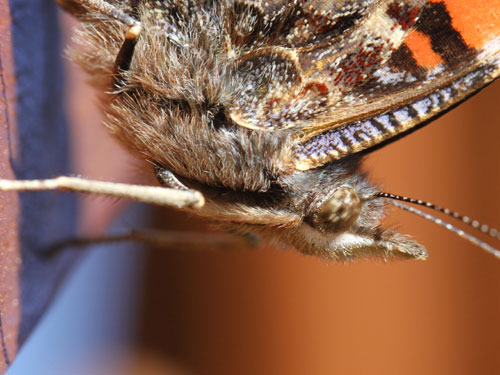
Vaud, Switzerland, October 2014
A close up of the brush foot tucked into the body below the eye.
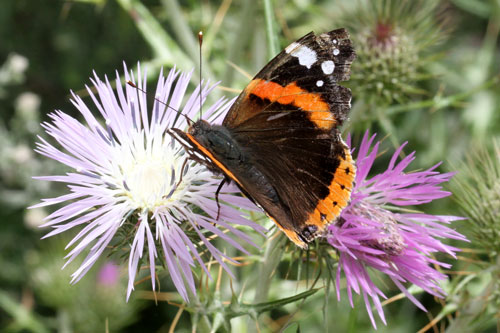
Gran Canaria, Spain, April 2011
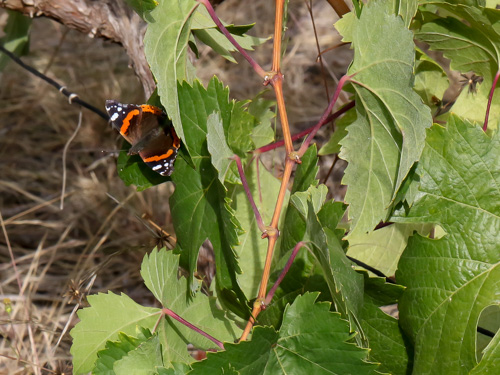
El Hierro, Spain, August 2021
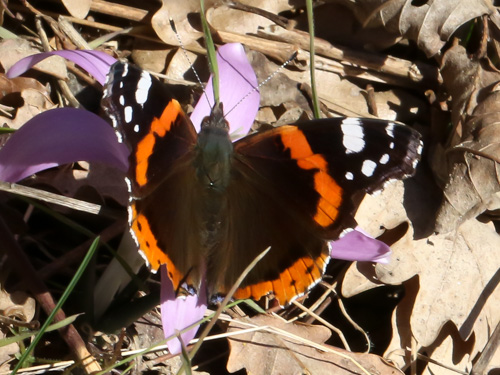
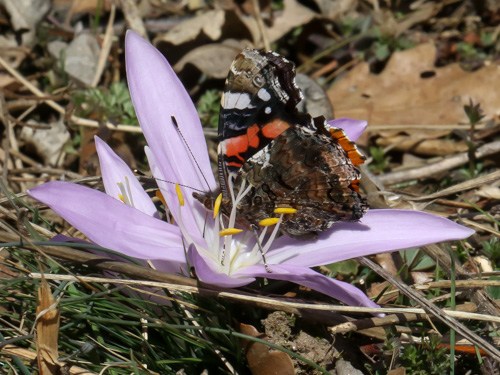
Valais, Switzerland, February 2021
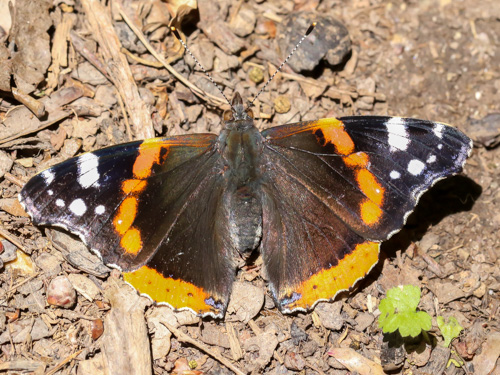
Geneva, Switzerland, June 2021
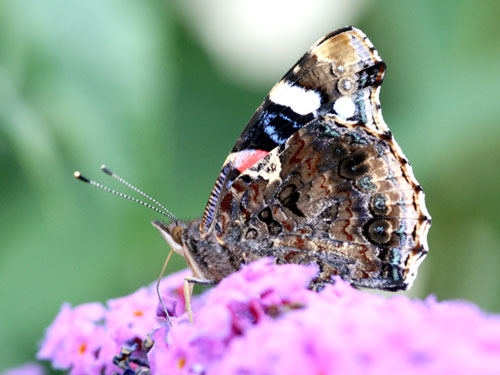
Brittany, France, July 2008
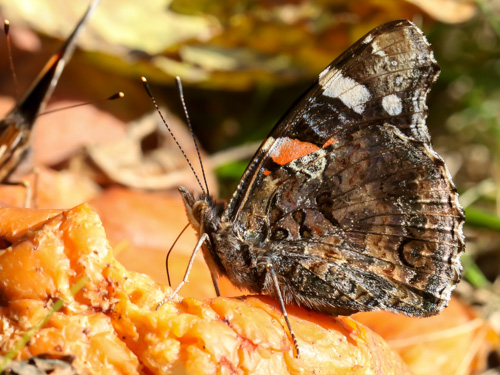
Vaud, Switzerland, October 2020

Vaud, Switzerland, August 2015
